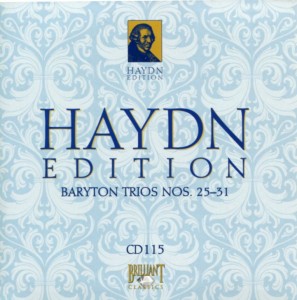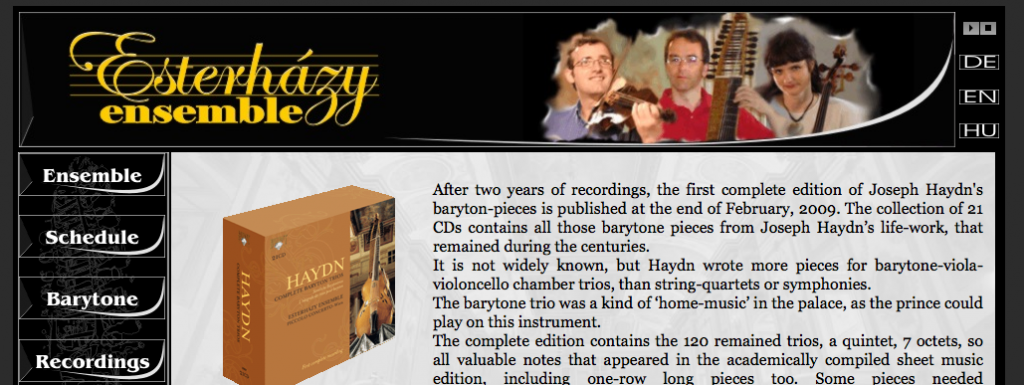 As I wrote in yesterday’s blog post, Haydn’s Baryton Trios aren’t exactly the most compelling of musical compositions.
As I wrote in yesterday’s blog post, Haydn’s Baryton Trios aren’t exactly the most compelling of musical compositions.
And the reason why is because Prince Esterhazy commanded Haydn create music that he could play.
So Haydn did.
What he created indicates Haydn didn’t think very highly of the Prince’s prowess.
Check out this entry on Wikipedia:
John Hsu estimates that the Prince [Esterhazy] was probably not a virtuoso on his instrument, judging from the difficulty of Haydn’s writing. The composer used only the top five of the seven bowed strings, and seldom required the player to pluck and bow simultaneously. The keys chosen are also the simplest to play in: D major and the neighboring keys of G major and A major.
While these easy-to-play baryton trios may have pleased the Prince no end (and kept Haydn gainfully employed), it makes for listening at this late date a bit of a chore because all of these trios sound the same. Very little variation in tempo. Very little variation in key.
That’s not to say these aren’t pleasant. They are. They’re just not essential.
Of the seven trios I heard today, I like Haydn Baryton Trio No. 26 in G (maybe because it’s in a key other than A) and Haydn Baryton Trio No. 29 in A (go figure).
 Here are the members of the Esterhazy Ensemble playing today’s Baryton Trios:
Here are the members of the Esterhazy Ensemble playing today’s Baryton Trios:
Michael Brussing baryton
Andras Bolyki viola
Maria Andrasfalvy-Brussing cello
Here’s what I listened to this morning. NOTE: Only one has a known date of composition, and that’s likely a guess. From my research, Haydn was probably in his early thirties when he composed these baryton trios.
Haydn Baryton Trio No. 25 in A
Haydn Baryton Trio No. 26 in G (Composed 1766-67. Haydn was 34 or 35.)
Haydn Baryton Trio No. 27 in D
Haydn Baryton Trio No. 28 in D
Haydn Baryton Trio No. 29 in A
Haydn Baryton Trio No. 31 in D
